Marie Jose Chaaya
Modeling tumor innervation: impact on immune cells and anti-cancer treatment
Team: Florence Hubert (I2M) Sophie Chauvet (IBDM), Pierre Pudlo (I2M)
Her background
2023 - present | Centuri PhD student, Aix-Marseille University, Marseille, France
2021 - 2023 | Masters in Computational and Mathematical Biology: Statistics, Aix-Marseille University, Marseille, France
2018 - 2020 | Masters in Mathematics, American University of Beirut (AUB), Beirut, Lebanon
2015 - 2018 | Bachelor’s in Mathematics, Lebanese University, Beirut, Lebanon
1999 - 2015 | Lebanese Baccalaureate: General Science, Sagesse High School, Beirut, Lebanon
Contact
About her PhD project
In the process of tumorigenesis and the appearance of pancreatic cancer, dynamical changes in the neuronal composition within the pancreas has been recently observed and it has been shown that axons influence cancer progression. Depending on the type of axons, they can have a pro-tumoral or an anti-tumoral effect. The effect might not always be direct, but caused by the release of neurotransmitters that affect the change in the population of macrophage immune cells in the environment that themselves play either a pro or anti-tumoral effect. Due to previous interactions between the IBDM (Institut of Developmental Biology of Marseille) and I2M teams, a mathematical modeling of nerve-tumor interactions has been published and showed that cancer-induced axonal plasticity contributes to turn an initially protective neural environment into one that favors tumor growth. This work shows how important it could be to be able to predict the impact of sequential denervation at different time point of pathology progression. However, the micro-environment of pancreatic cancer is complicated and there still exists challenging research questions related to the the impact of the nervous system on tumor progression. In recent studies, it has been observed that axonogenesis depends on the stiffness of the tissue in the tumor and that cancer growth can be affected by the presence of immune cells. During the thesis, the aim will be to construct a new mathematical model on the tissue level and take into consideration space. A more in detailed view will be considered, where now the stiffness of the tissue and the recruitment of immune cells will be taken into consideration. The model will be calibrated, and in silico experiments will be applied. Therefore, the objective is to obtain results that allow in formulating hypotheses that could help in the neurobiology of pancreatic cancer and in how pancreatic cancer can be controlled.







